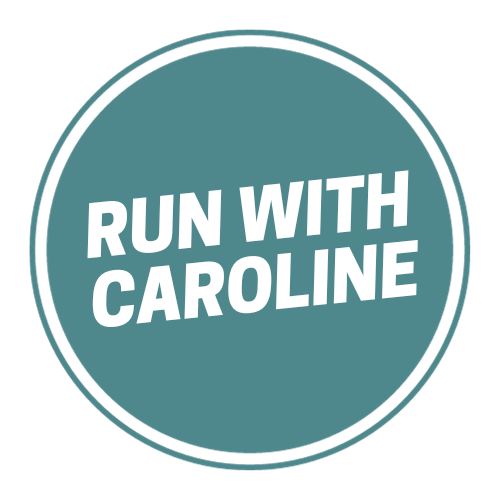Resistance band exercises for runners are a great way to keep strength training when you no longer have access to a gym, or just don’t want to go there for personal reasons.
There are hundreds of workouts you can do with a resistance band.
Even better, you can choose to do them from the comfort of your own home.
The resistance band exercises for runners in this guide will help you become a stronger and faster runner in no time.
In this guide we’ll explore:
- What is resistance training?
- What are resistance bands?
- Benefits of resistance band exercises for runners
- Dumbbells vs resistance bands
- Can I build muscle with resistance bands?
- How often should runners use resistance bands?
- What are good resistance band exercises for runners?
- 7 resistance band exercises for runners
Ready?
Let’s go!
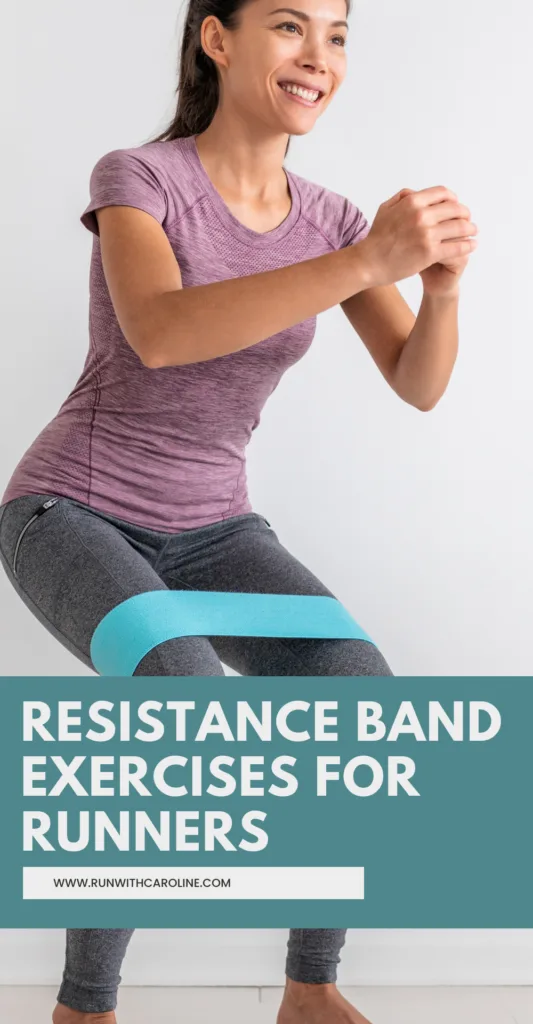
What is resistance training?
Resistance training is more commonly referred to as strength training or weight training.
It is any form of exercise where you lift or pull against resistance.
The resistance could be using your own bodyweight, free weights such as dumbbels or kettlebells, or a resistance band.
Related: Strength training exercises for runners: The complete guide
What are resistance bands?
Resistance bands are essentially stretchable and elasticated bands used in general fitness and physical therapy.
There are different types of resistance bands on the market that can be used for different purposes depending on the exercise you are doing and your fitness and body goals.
The are 6 main types of resistance band:
#1 Therapy resistance bands
Therapy bands are mainly used for rehabilitation and physical therapy. They do not have handles and are gentle on the body.
#2 Tube resistance bands
As the name suggests, these are tube shaped bands with handles. They are mainly used to train the upper body and arms.
#3 Mini resistance bands
These are mainly used to train the lower body such as the glutes, hips and buttocks. They are a short, flat, looped band that you can wrap around your upper legs.
#4 Figure 8 resistance bands
Figure 8 bands are plastic, tubular bands with a handles in a figure 8 shape. These are mainly used for developing strength in the upper body.
#5 Ring resistance bands
These are small, ring-shaped bands with two handles attached either side. These bands are mainly used to train the lower body.
#6 Lateral resistance bands
Lateral bands are used to train the lower body. Instead of handles either side of the band, lateral bands have velcro cuffs which are typically wrapped around the ankles.
Related: 9 best core exercises for runners + 4 core workouts to try
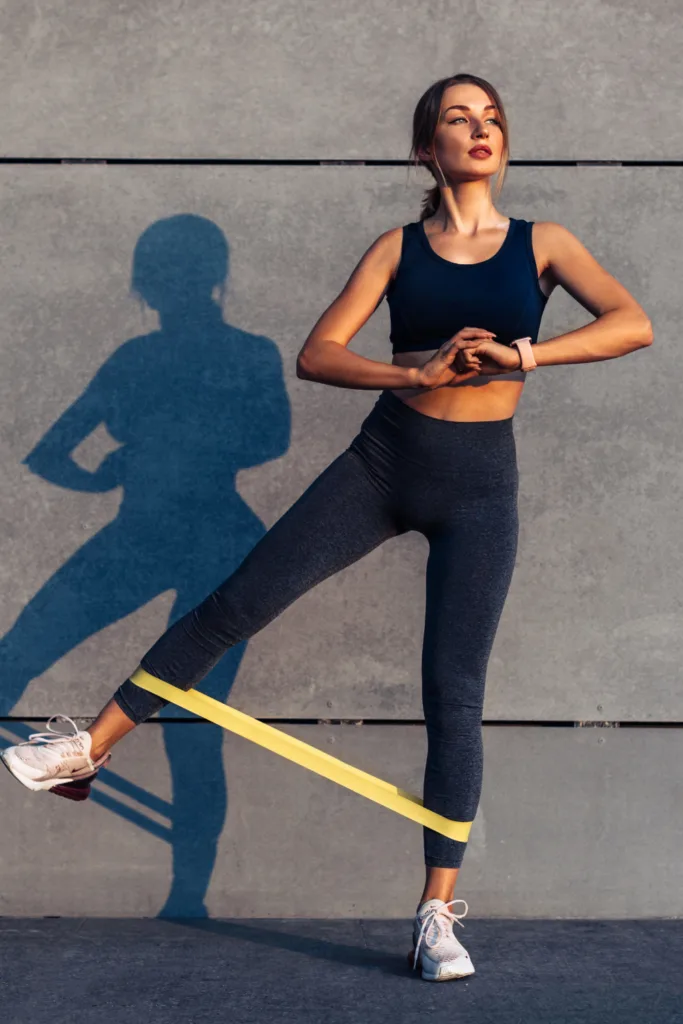
Benefits of resistance band exercises for runners
Resistance band exercises are a great addition to any training plan and workout routine.
They help to build strength in the major muscles you use while running, mainly your core, glutes and legs.
Resistance band exercises also offer a simple, low impact alternative to exercises that use free weights such as dumbbells and kettlebells.
The key benefit of resistance band exercises is that they can be done whilst in a seated position.
As such they are great to do if you are coming back from an injury or if you have limited mobility.
They are also easy to do at home which makes them a great option for beginner runners.
Related: The ultimate 30 day strength training plan for runners
Dumbbells vs resistance bands
In a 2017 study, it was found that elastic resistance bands are just as effective as dumbbells when improving multi-joint strength.
Whilst strength training is crucial to improve your running form, efficiency and pace, adding resistance bands to your exercise routine is a simple, low impact way to build strength in the muscles that runners use most.
Injuries when running normally stem from weaknesses in some of the key muscles, such as the hips, knees, glutes and core.
By incorporating resistance band exercises in your routine at least twice a week, you are laying the foundations for your running strength.
Here are the pros and cons of each:
Dumbbells
- Best for strength and muscle
- More functional than resistance bands
- Easy to overload and track
- Use constant rather than variable resistance
Resistance bands
- Good for beginners
- Lightweight and portable
- Less expensive compared to dumbbells and free weights
- Use variable rather than constant resistance
Related: 6 of the best resistance band workouts for runners
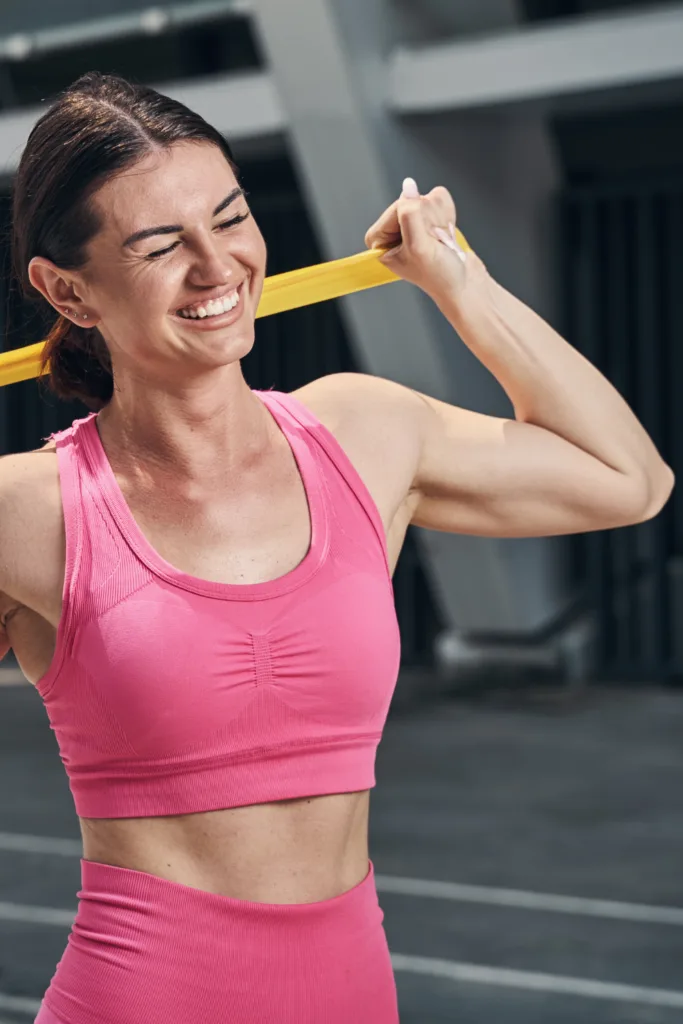
Can I build muscle with resistance bands?
Yes! Resistance bands build muscle in the same way as free weights do.
The key is to practice something called ‘progressive overload’ which is a technique used to continually force your body to adapt to more stress and tension that it was previously exposed to.
If using weights, the way to do this is by lifting heavier weights. With resistance bands, you use bands with an increased size or tension.
You can also increase the number of repetitions when doing an exercise to promote muscle exhaustion.
Related: Does running build leg muscle? 4 leg workouts for runners
How often should runners use resistance bands?
It is recommended that you do at least 2-3 strength training sessions per week.
If you are returning to running following an injury, you’ll want to include more low impact sessions in your training routine.
You’ll want to avoid exercises using free weighs for the time being, and instead focus on doing resistance band exercises like the ones in this guide.
Related: The ultimate 30 day at home workout challenge for runners
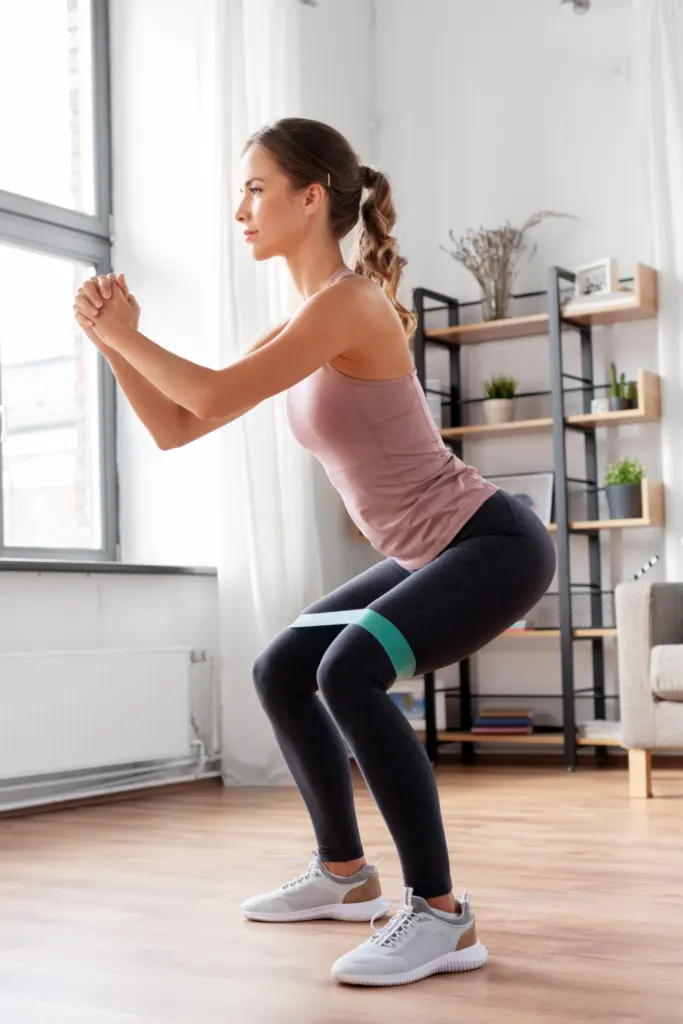
What are good resistance band exercises for runners?
The best resistance band exercises for runners are those that focus on full body movements, unilateral movements and core strength.
#1 Full body movements
Also known as ‘compound’ movements, these are movements that use your whole body, including your legs, core, upper body and arms.
#2 Unilateral movements
These are movements that use a single leg or single arm, like in a forward lunge or step-ups.
Running is considered a unilateral form of movement, meaning that your legs are moving independently of one another, supporting your body.
#3 Core strength
These are movements that develop your core strength as a runner.
Your core is important when running as it helps to keep a strong and stable position for longer.
Related: Pulse squats + 12 squat variations to try before your next run
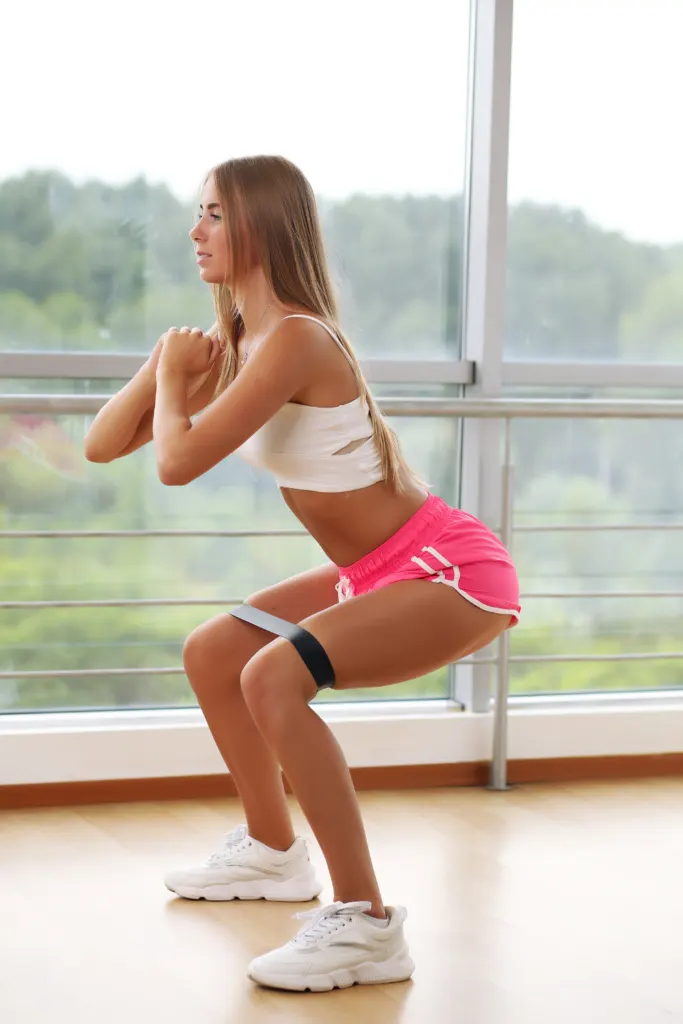
7 resistance band exercises for runners
Now you know all about the benefits of resistance band workouts, here are 7 of the best resistance band exercises for runners.
#1 Side steps
Side steps are good for strengthening and stabilising your hip flexors. As a runner, your hips take some serious impact, especially on those long runs.
If you regularly experience stiff or painful hips, side steps are a great exercise to try.
- Loop the resistance band around your ankles and bend your knees slightly.
- Take side steps left then right again.
- The thicker the resistance band, the harder it will feel. If you’re a beginner, start with a thinner resistance band.
- Make sure you keep the tension in the band and don’t let your feet come together.
- Repeat this movement 12 to 16 times. You will slowly get stronger as you add more resistance to the exercise.
#2 Monster steps
Don’t let the name of this workout worry you – they’re not as bad as they sound! Monster steps are another great exercise for glute activation.
In fact, resistance band exercises for runners like these are a simple and effective way to activate your glutes.
- Loop the band around your ankles, bend your knees slightly and sink into a squat – your feet should be hip-width apart.
- Take big steps (hence the ‘monster’ name), making sure that your feet are as wide as possible.
- Take 10-15 steps forward then step back to where you started. You’ll soon feel the burn after a few sets of these!
#3 Standing hip abduction
This resistance band exercise is good as it really targets and strengthens the hip muscles.
You’ll need a thin resistance band for this exercise.
- Loop the band around a sturdy object and the other round your right ankle, then stand tall with the left foot on the tubing, while holding the opposite handle.
- Next, while keeping the right knee straight and engaging the core, kick your right leg outward, hold for a moment, then slowly return to the starting position.
- Don’t be tempted to rotate your hips. Instead, keep your focus on using your hip muscles.
- Repeat 10 times then change to the opposite leg.
#4 Clams
Clams are one of my favourite resistance band exercises for runners.
I regularly do two or three sets of clams before a workout in the gym as they are so effective at priming the glutes for exercise.
They are also a great exercise to target the outer thighs, groin and hip flexors.
There has to be quite a bit of resistance in the band for this exercise to make it effective., so you’ll need a thicker band.
- Lie on the floor, turn on your side and loop the band around your lower thighs.
- Slowly open up your legs in a clam motion then close them back again.
- Repeat 10-20 times depending on how hard you want to go. I like to mix it up with hip bridges in between.
#5 Kickbacks
Kickbacks are so simple and effective and are great for targeting the back of your thighs and bum.
- Loop the band just above your ankle and face a sturdy object, like a chair or wall.
- Slightly bend your knee and lift your left foot off the ground, driving the heel back in a kickback motion.
- Hold for a moment at the top of the movement, then lower down and repeat on the same side.
- Don’t be tempted to rock forward – engage your core muscles as you lift.
#6 Hip flexor marches
Your hip flexors are what connect the lower back, hips and groin.
They are responsible for knee drive while running and can often become tight due to sitting for long periods of time.
Hip flexor marches with a resistance band work the hip flexors, glutes and core stability. They are also good for improving your balance.
- Put the resistance band around the arches of your feet. Brace your core and bring your left leg up towards your chest with your knee at a 90 degree angle.
- Keep your standing leg straight and your hips level. Hold for three seconds and then lower back down.
- Repeat for 10 with your left leg and then 10 with your right. Work up to 15-20 per leg.
#7 Wall sits
Wall sits help correct poor posture as a result of sitting behind a desk all day.
A wall sit works the muscles of the lower body.
Adding a resistance band to the wall sit helps strengthen external hip rotators, to keep the knees from knocking inwards as you run.
- Place the band around your thighs. Place your back against the wall and slide down until your knees are at a 90 degree angle and your feet are about two feet away from the wall.
- Engage your core and push your knees slightly outward so there is tension on the band.
- Raise your arms upwards, keeping your shoulder blades, fingers and elbows against the wall the entire time.
- Complete 15-20 glides.
- 5 things I wish I’d known before returning to running - March 3, 2024
- Running 20 minutes a day: Benefits + how to start - January 27, 2024
- How to run your first 2 hour half marathon - January 16, 2024
